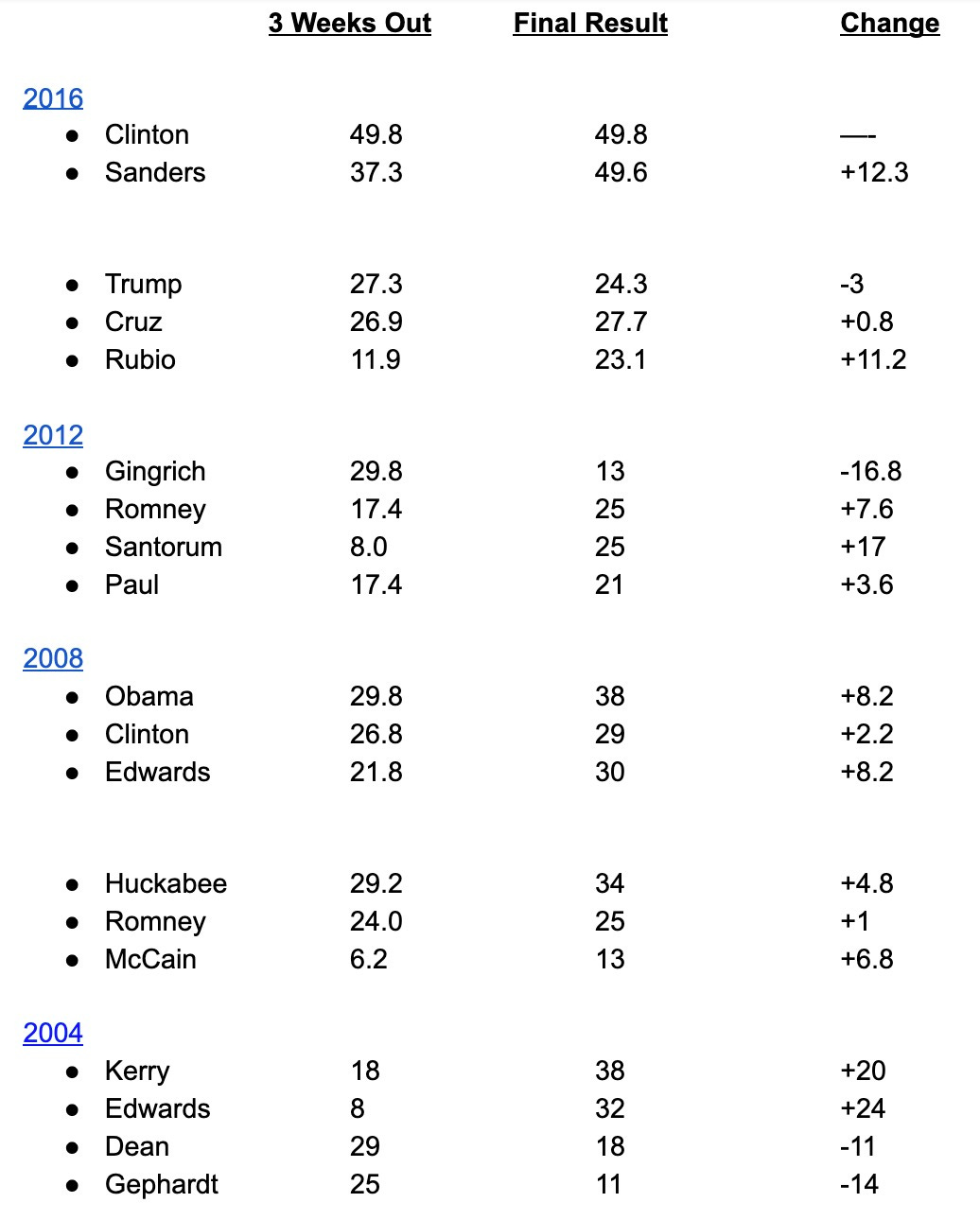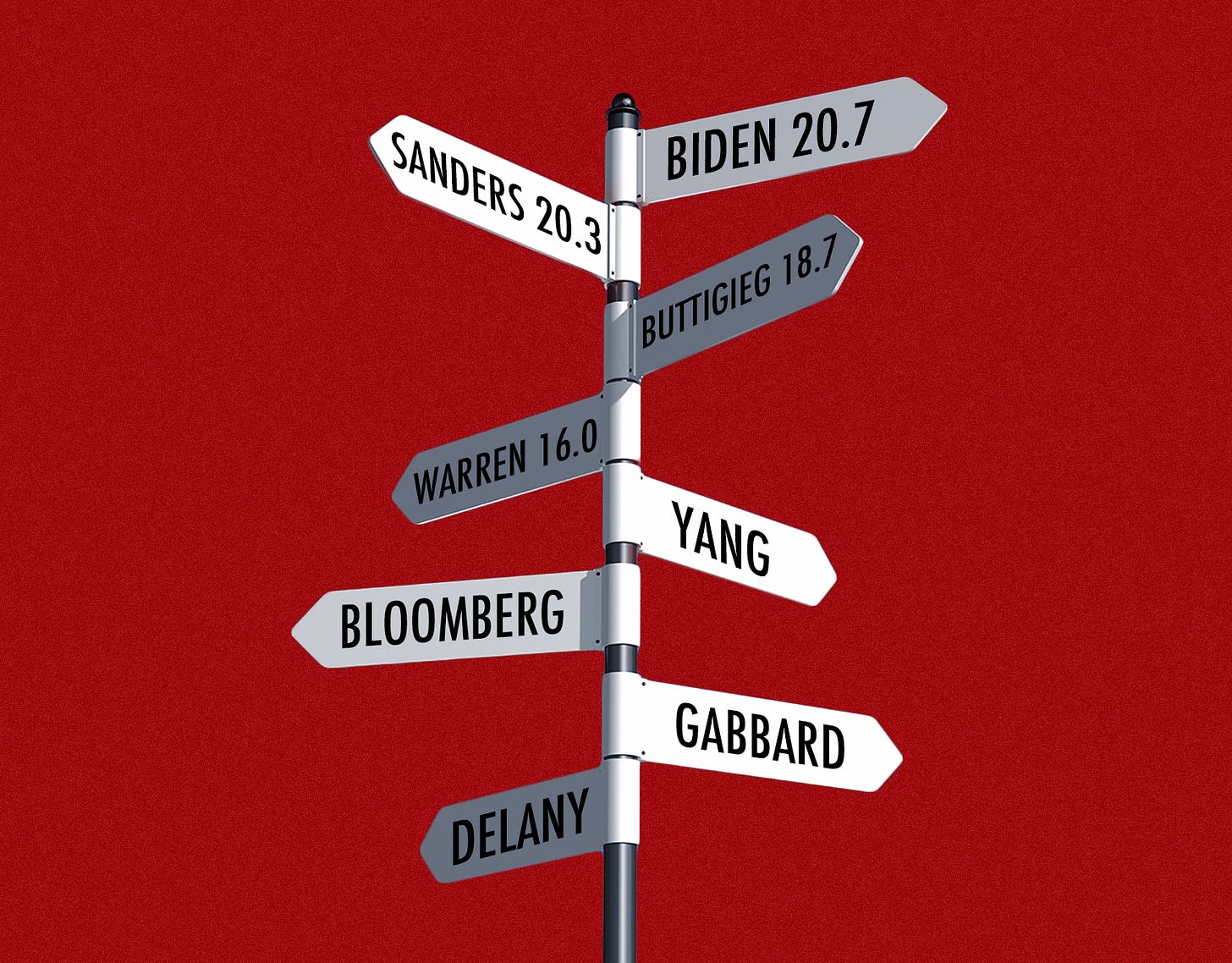Here's How the Democratic Race Could Change Between Today and Iowa
The Iowa caucuses are three weeks away. It’s worth taking a look at recent history to get a sense of how fluid the dynamic is in this period before live voters show up.
The answer is: It depends.
I looked at polling numbers three weeks out from the 2016, 2012, 2008, and 2004 cycles, then put those numbers against the actual results to show you the delta.
First the caveats:
Democrats and Republicans have different rules for their caucuses. For instance, with the Democrats in 2020, candidates have to top a 15 percent threshold in a precinct in order to be considered viable. If you can’t clear that threshold, your supporters in that precinct have to switch candidates or walk away. So we're not really looking apples-to-apples.
For 2016, 2012, and 2008, I’m looking at RealClear polling averages, while for 2004 I’m using a single Des Moines Register poll taken slightly less than three weeks out.
This is a very small set to begin with.
The following information is for entertainment purposes only.
I am not David Byler. He is much smarter than me. You should subscribe to his newsletter.
With that out of the way, here are the numbers:

What can we glean from this? Nothing earth-shattering, but there are a couple takeaways:
Most top-tier candidates gain support in the final stretch, not lose it.
The only real “collapses” were from candidates who were longshots to begin with: Dick Gephardt and Newt Gingrich. Howard Dean in 2004 is the outlier: By all traditional metrics, he should have been a longshot, but he was, for quite a while, the frontrunner.
So if you’re looking for Bernie, Biden, Buttigieg, or Warren to collapse, it might happen to one of them, but probably not two of them, and definitely not three of them.
Moving up by 6 or 8 points in the final three weeks is pretty common.
Moving by a lot—15 or even 20 points—is uncommon, but not impossible. However, it does require the general collapse of one of the other candidates.
This is the state of play, right now, according to the RCP average:
Biden 20.7
Sanders 20.3
Buttigieg 18.7
Warren 16.0
My main takeaway is that if you believe the top four candidates right now are reasonably solid, then the final results could be within a few points of where we stand. Each of them ticks upward somewhere between one point and seven points and the order of the finish could be scrambled in any of the 24 possibilities.
But if you believe that one (or two) of this Big Four is headed toward a collapse—for my money, that would probably be Buttigieg or Warren—then you have the possibility of big movement for one of the others in the closing days.
If there is a collapse, in hindsight it will look obvious. For Warren, it would mean not crossing the 15 percent threshold that she’s near. For Buttigieg it would mean voters turning away from his longshot candidacy and going with one of the perceived heavyweight challengers—the way they abandoned Newt in 2012 and Dean in 2004.
I’m not sure which way I lean at this point. It seems like a 50-50 proposition.



